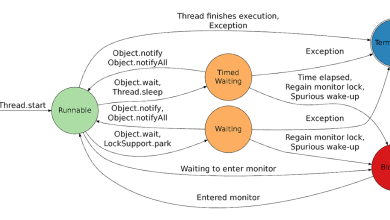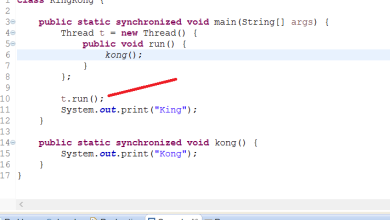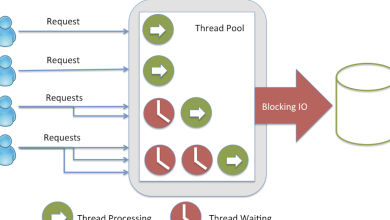Observer design Pattern in Java with Real world code Example
Also here is a nice overview of what is Observer design pattern and how it works before we deep dive into it
1. What is Observer design Pattern?
 Observer design pattern in Java is a very important pattern and as the name suggests it’s used to observe things. Suppose you want to notify for change in a particular object then you observe that object and changes are notified to you.
Observer design pattern in Java is a very important pattern and as the name suggests it’s used to observe things. Suppose you want to notify for change in a particular object then you observe that object and changes are notified to you. The object which is being observed is refereed as Subject and classes which observe subject are called Observer.
This is a beautiful pattern and used heavily along with Model View Controller Design pattern where change in model is propagated to view so that it can render it with modified information.
2. The problem which is solved by Observer Pattern:
If we have requirement that if particular object change its state and subsequently depending upon that some or group of objects automatically change their state we need to implement observer pattern it will reduce coupling between objects.
In real world if try to find example see when we subscribe for new Phone connection whenever customer is registered with that company all other departments are notified accordingly and then depending upon the state they do their jobs like do the verification of their address then if customer state is verified then dispatch the welcome kit etc.
How the Observer Design Pattern is implemented in Java;
For the implementation of this pattern java makes our task very easy, the developer need not do so much for implementing this pattern .In java.util package we can find interfaces, classes, and methods for implementing this pattern.
Public Interface Observer:
Any class that implements this interface must be notified when the subject or observable object changes its status.
Update (Observable Ob, Object arg): This method is called when the subject is changed.
Class Observable:
It’s a subject to whom observer wants to observe.
Some Important Method:
addObserver(Observer o):add Observers in the set of observers for this subject or observalbel object.
deleteObserver(Observer o): delete Observers in the set of observers .
hasChanged():check if object has changed.
clearChanged():this method will indicate that subject has no changes or all the observers has been notified when changes is made.
notifyObservers(): notify all the observers if object has changed .
Code Example of Observer design pattern in Java:
The observer Design pattern is generic than how it is implemented in Java. You are free to choose java.util.Observable or java.util.Observer or writing your own Subject and Observer interface.
My Example is very Simple you have a Loan on which interest rate is subject to change and when it changes, Loan notifies to Newspaper or Internet media to display a new loan interest rate.
To implement this we have a Subject interface that contains methods for adding, removing and notifying Observers and an Observer interface which contains update(int interest) method which will be called by the Subject implementation when the interest rate changes.
import java.util.ArrayList;
interface Observer {
public void update(float interest);
}
interface Subject {
public void registerObserver(Observer observer);
public void removeObserver(Observer observer);
public void notifyObservers();
}
class Loan implements Subject {
private ArrayList<Observer> observers = new ArrayList<Observer>();
private String type;
private float interest;
private String bank;
public Loan(String type, float interest, String bank) {
this.type = type;
this.interest = interest;
this.bank = bank;
}
public float getInterest() {
return interest;
}
public void setInterest(float interest) {
this.interest = interest;
notifyObservers();
}
public String getBank() {
return this.bank;
}
public String getType() {
return this.type;
}
@Override
public void registerObserver(Observer observer) {
observers.add(observer);
}
@Override
public void removeObserver(Observer observer) {
observers.remove(observer);
}
@Override
public void notifyObservers() {
for (Observer ob : observers) {
System.out
.println(“Notifying Observers on change in Loan interest rate”);
ob.update(this.interest);
}
}
}
class Newspaper implements Observer {
@Override
public void update(float interest) {
System.out.println(“Newspaper: Interest Rate updated, new Rate is: “
+ interest);
}
}
class Internet implements Observer {
@Override
public void update(float interest) {
System.out.println(“Internet: Interest Rate updated, new Rate is: “
+ interest);
}
}
public class ObserverTest {
public static void main(String args[]) {
// this will maintain all loans information
Newspaper printMedia = new Newspaper();
Internet onlineMedia = new Internet();
Loan personalLoan = new Loan(“Personal Loan”, 12.5f,
“Standard Charterd”);
personalLoan.registerObserver(printMedia);
personalLoan.registerObserver(onlineMedia);
personalLoan.setInterest(3.5f);
}
}
Advantage of Observer Design Pattern in Java:
The main advantage is loose coupling between objects called observer and observable. The subject only knows the list of observers it don’t care about how they have their implementation.
All the observers are notified by subject in a single event call as Broadcast communication
Disadvantage of Observer Design Pattern in Java:
· Another issue is Memory management because subject will hold all the reference of all the observers if we not unregister the object it can create the memory issue.
That’s all on Observer Pattern in Java. It’s one of the essential design pattern in object oriented programming and come under behavioral patterns. A good knowledge of this pattern goes a long way in writing better code and also doing well on Java interviews.
You can also share your thought how and when you have used Observer Pattern in your Project and any issue you have faced?
Further Learning
Design Pattern Library
From 0 to 1: Design Patterns – 24 That Matter – In Java
Java Design Patterns – The Complete Masterclass
Java Tutorials you may like



